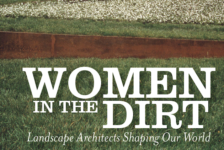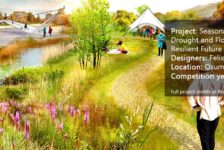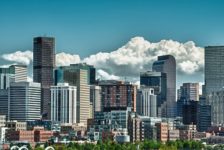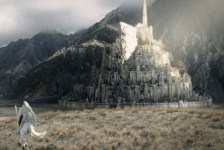Last time I posted suggestions of what you might consider putting in your Landscape Architecture portfolio. Today, however, I ask you to consider each project and take a look at how well your materials represent the work and you. Did someone else do a rendering? Did one of your favorite projects take a detour from the way you hoped the design would go? Well don’t just sit there, do something about it!
Consider the work you intend to show and decide if there is anything that you can do to add depth to individual projects or to better represent your own skill set.
- Hand-drawings. Of landscapes. Go out and practice, it is free.
- New renderings: If you have the ability to do a better job on the rendering than you did before, or maybe the rendering that was done was not your handiwork, think about replacing it.
- Photography: Be sure that the images you include are relevant to your portfolio, and your photographs are the very best you can do. I urge you to give attribution for the subject if the project is not your own (but the photos are) and to photographers who photographed work that you are taking responsibility for.
- Writing samples: I keep coming back to this for a couple of reasons: you can do it, you need to be good at it, and it is free.
- Paper architecture: No experience? No problem. Enter a design competition, or find a site and design something for it. Maybe you would like to re-design a nearby site or a friend or family’s property. Employed or not, you have the ability to produce work. Never let a little thing like lack of a job or client get in your way.
- Creative hobbies and other pursuits: Okay, I include this for only one reason. Ordinarily, I would say to only include stuff that is Landscape Architecture related, but I had the experience of an unrelated interest benefiting my employer. My boss knew that I had been a rower in college from casual conversation. One day I was asked to join a meeting with a prospective client, they were discussing a project that included a rowing regatta venue. I explained staging, boat sizes, and race protocols. If my boss hadn’t known that I was an oarswoman in college, he would not have known to ask me about this esoteric subject. How does this apply to you? I would say that if you have something seemingly unrelated that makes you more unique, find a way to link it to Landscape Architecture or research it so that you can design for it. I had to think on my feet in that meeting, but if I had ever studied the design issues of regattas, I would have been even better prepared.
- Planting palette graphics: perhaps your project had a planting palette but you did not create graphics specific to the planting list. Here is your chance to generate something that communicates that planting palette better now.
- Sketchup (or other 3-d) Models: SketchUp is becoming pretty ubiquitous. I love that the software is free and that there are video tutorials online. If you’ve got a project that is lacking something, maybe you have enough information to build a SketchUp model and add a few images from that!
- Style boards: Many times these are not generated during project development, so why don’t you make one?
- Awards and Honors: Sounds like something for your resume, right? Having stuff like this in your resume is awesome, but if you put it in your portfolio as well, it may become an even stronger conversation piece.
- Re-designed project: We’ve all had the experience of working on a project and having our ideas altered by bosses and/or clients. Well, this is your portfolio, so what if you took that same project, and provided graphics of how YOU would have done it differently? Your portfolio doesn’t have to be exclusive to what real-life handed you. If you opt to re-design it, make sure that presenting your alternative is not a negative commentary on the real project, but is more about how you would love to have happen if real life had not intervened.
I recognize that pulling your portfolio together is hard enough without all the extra effort of re-doing things. Maybe in considering the list above you will find opportunities to improve your portfolio or just to improve your skills – either way, working towards your ultimate goal is a good thing, right?
Next time, I will be posting articles on portfolio design that I found online. If you have a favorite, please feel free to send it to me!
Published in Blog






